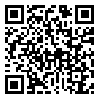Volume 13, Issue 4 (10-2025)
J. Pediatr. Rev 2025, 13(4): 339-344 |
Back to browse issues page
Download citation:
BibTeX | RIS | EndNote | Medlars | ProCite | Reference Manager | RefWorks
Send citation to:



BibTeX | RIS | EndNote | Medlars | ProCite | Reference Manager | RefWorks
Send citation to:
MZ J, Umapathy N, Mahesh M, Gulab Chaudhary D. Diagnostic Accuracy of Pulse Oximetry in Children With Different Skin Tones: A Cross-sectional Study. J. Pediatr. Rev 2025; 13 (4) :339-344
URL: http://jpr.mazums.ac.ir/article-1-783-en.html
URL: http://jpr.mazums.ac.ir/article-1-783-en.html
Diagnostic Accuracy of Pulse Oximetry in Children With Different Skin Tones: A Cross-sectional Study
1- Department of Paediatrics, Postgraduate, Saveetha University (SIMATS), Chennai, India.
2- Department of Paediatrics, Postgraduate, Saveetha University (SIMATS), Chennai, India. ,navinu02@gmail.com
2- Department of Paediatrics, Postgraduate, Saveetha University (SIMATS), Chennai, India. ,
Abstract: (414 Views)
Background: Pulse oximetry is a widely used non-invasive method for monitoring oxygen saturation (SaO₂) in pediatric patients. However, concerns have emerged about its accuracy across different skin tones, with darker pigmentation potentially leading to overestimation of arterial SaO₂.
Objectives: This study aims to evaluate the diagnostic accuracy of pulse oximetry (peripheral oxygen saturation [SpO₂]) in children with different skin tones, using arterial blood gas (ABG) analysis as the reference standard.
Methods: This prospective, cross-sectional study was conducted at a tertiary pediatric hospital in India over a 6-month period on 300 children aged 1 month to 18 years undergoing clinically indicated ABG sampling. Skin tone was classified using the Fitzpatrick scale, which divides children into three groups of 100, including light skin (types I–II), medium skin (types III–IV), and dark skin (types V–VI). Simultaneous SpO₂ and SaO₂ measurements were obtained, and mean difference (SpO₂–SaO₂), root mean square error (RMSE), and frequency of clinically significant overestimation (SpO₂ ≥92% when SaO₂<88%) were analyzed. Multivariable regression was used to adjust for confounders.
Results: Pulse oximetry overestimated SaO₂ in all groups, with the greatest bias observed in the dark skin group (mean difference=1.9%, RMSE=2.6) compared to the light-skin peers (mean difference=0.8%, RMSE=1.6; P<0.001). Clinically significant overestimation occurred in 35% of dark-skinned children with SaO₂<88%, compared to 8% in light-skinned children (P=0.004). Dark skin tone (β=1.04; P<0.001). and medium skin tone (β=0.51, P=0.011) were the predictors of SpO₂ bias after adjusting for age and oxygen supplementation. Skin tone classification showed excellent inter-rater agreement (Cohen’s κ>0.88).
Conclusions: Pulse oximetry significantly overestimates arterial SaO₂ in children with darker skin tones, increasing the risk of unrecognized hypoxemia. These findings highlight a critical issue in pediatric monitoring and indicate the need for more inclusive device calibration, clinical vigilance, and confirmatory testing in dark-skinned children.
Objectives: This study aims to evaluate the diagnostic accuracy of pulse oximetry (peripheral oxygen saturation [SpO₂]) in children with different skin tones, using arterial blood gas (ABG) analysis as the reference standard.
Methods: This prospective, cross-sectional study was conducted at a tertiary pediatric hospital in India over a 6-month period on 300 children aged 1 month to 18 years undergoing clinically indicated ABG sampling. Skin tone was classified using the Fitzpatrick scale, which divides children into three groups of 100, including light skin (types I–II), medium skin (types III–IV), and dark skin (types V–VI). Simultaneous SpO₂ and SaO₂ measurements were obtained, and mean difference (SpO₂–SaO₂), root mean square error (RMSE), and frequency of clinically significant overestimation (SpO₂ ≥92% when SaO₂<88%) were analyzed. Multivariable regression was used to adjust for confounders.
Results: Pulse oximetry overestimated SaO₂ in all groups, with the greatest bias observed in the dark skin group (mean difference=1.9%, RMSE=2.6) compared to the light-skin peers (mean difference=0.8%, RMSE=1.6; P<0.001). Clinically significant overestimation occurred in 35% of dark-skinned children with SaO₂<88%, compared to 8% in light-skinned children (P=0.004). Dark skin tone (β=1.04; P<0.001). and medium skin tone (β=0.51, P=0.011) were the predictors of SpO₂ bias after adjusting for age and oxygen supplementation. Skin tone classification showed excellent inter-rater agreement (Cohen’s κ>0.88).
Conclusions: Pulse oximetry significantly overestimates arterial SaO₂ in children with darker skin tones, increasing the risk of unrecognized hypoxemia. These findings highlight a critical issue in pediatric monitoring and indicate the need for more inclusive device calibration, clinical vigilance, and confirmatory testing in dark-skinned children.
Keywords: Pulse oximetry, Diagnostic accuracy, Skin tone, Fitzpatrick scale, Pediatric hypoxemia, Oxygen saturation (SaO₂), Arterial blood gas (ABG)
Type of Study: Original Article |
Subject:
Pediatric Gastroenterology
Received: 2025/08/9 | Accepted: 2025/10/18 | Published: 2025/10/18
Received: 2025/08/9 | Accepted: 2025/10/18 | Published: 2025/10/18
Send email to the article author
| Rights and permissions | |
 |
This work is licensed under a Creative Commons Attribution-NonCommercial 4.0 International License. |









